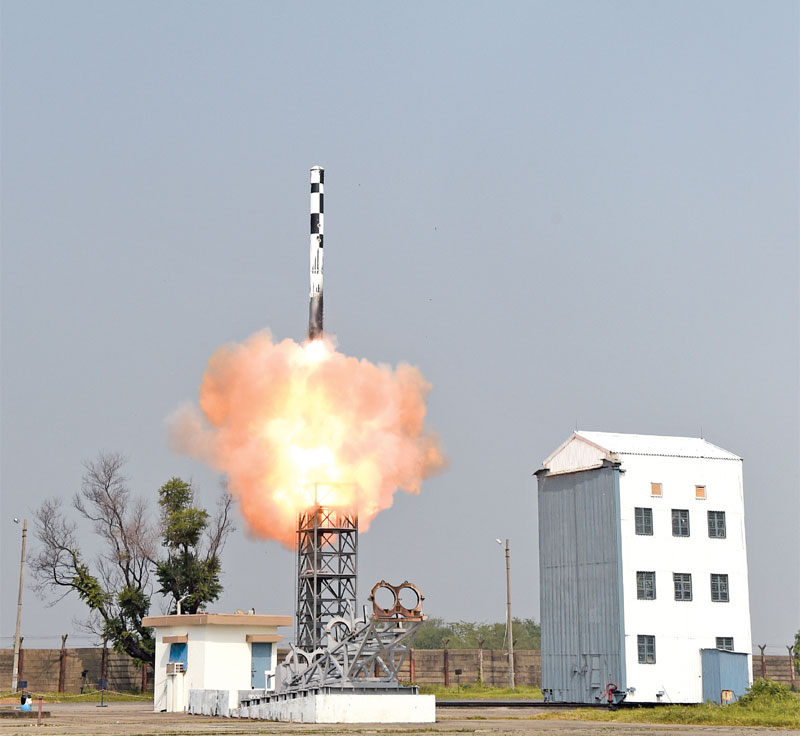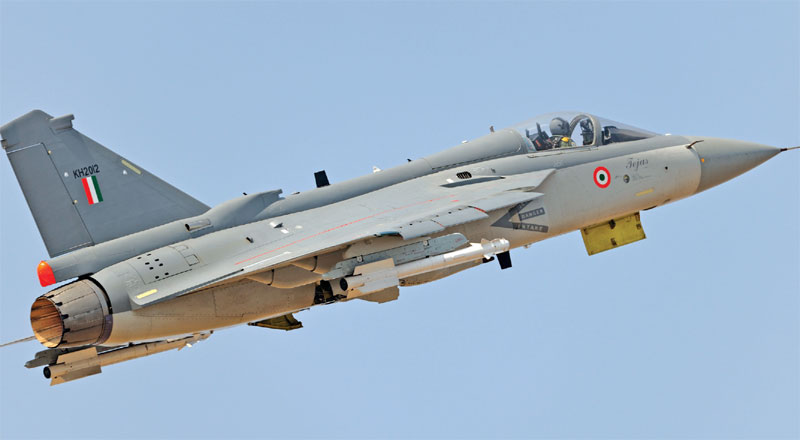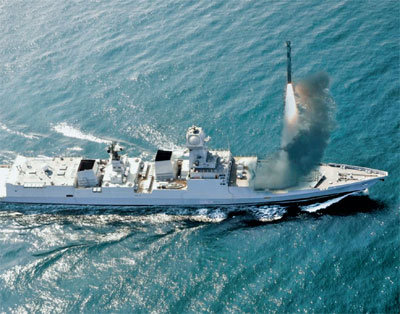Aatmanirbhar abhiyan pushing military to induct mediocre arms, equipment from indigenous sources
 Gp Capt. A K Sachdev (Retd)
Gp Capt. A K Sachdev (Retd)
The Aatmanirbhar Bharat Abhiyan, unveiled by the government in May 2020 against the backdrop of the Covid-19 pandemic, ostensibly related to a financial package designed to provide an economic stimulus to a stifled economy. It essentially repackaged the old Make in India wine (which had by then turned into vinegar) into a new, more alluring, relabelled bottle.
Just as Prime Minister Narendra Modi had put his full weight behind Make in India, making it the theme for the 2015 Aero India Show and even inaugurating it (only one edition had been inaugurated by a PM before that), he personally announced Aatmanirbhar and made it the theme for the 2021 edition of the Aero India Show. Just before the show took off, Modi tweeted that “India offers unlimited potential in defence and aerospace. Aero India is a wonderful platform for collaborations in these areas. The government of India has brought futuristic reforms in these sectors, which will add impetus to our quest to become Aatmanirbhar.”
Transcending impressive heights of sloganeering, the term has become a mantra. It is defined as a sacred, awe-inspiring utterance believed to have religious, magical or spiritual powers but recited by many without understanding its real meaning. It is now rare when there is no newspaper report or some political speech or a byte on TV, intoning Aatmanirbhar in strident and thundering grandiloquence, almost as if the government was employing a Goebbelsian campaign to persuade the nation about its unadulterated success. The government is convinced that this is the case. Hence, it is necessary to look at Aatmanirbhar in the context of indigenisation in aerospace and defence, project a whiff of the successes and peel off the fabricated cosmetics over the failures.

Success Stories
It would be erroneous to say that there have been no indigenous manufacturing success stories. The Vikrant set sail last month and is a true triumph, albeit with only 76 per cent indigenous content, the remaining 24 per cent, including the all-important power plant, was imported. But even that success story was diluted somewhat in the absence of any indigenous fighter aircraft to embark on to it.
Of the three services, the navy has been the leading benefactor with several types of vessels, including nuclear submarines, being produced indigenously. The Light Combat Aircraft (LCA) is yet to become a potent combat fighter and even when it does, it will have a General Electric engine. Indeed, so will the Advanced Medium Combat Aircraft (AMCA) whenever it emerges as an operational fighter. Tata has a contract for producing C-295 transport aircraft indigenously and that is something to be proud of although the transfer of technology would be minimal.
The Indian Space Research Organisation (ISRO) has achieved spectacular successes while in the area of missiles, India is doing extremely well. Radars and sonars are also satisfying areas although the technology for an Active Electronically Scanned Array (AESA) remains elusive so far, the name Uttam already having been designated for a future indigenous AESA radar notwithstanding. The sale of the Brahmos to the Philippines in January this year is a success story, although Brahmos is not a purely indigenous venture but an Indo-Russian one. Artillery guns (155/52 mm K-9 Vajra tracked SP with 50 per cent indigenous content) and the Futuristic Infantry Combat Vehicles (FICV) are being produced in India as are some unmanned aerial vehicles with mediocre technology levels.
Other indigenously produced products include the 155mm artillery gun system Dhanush, surface to air missile (SAM) system Akash, main battle tank Arjun, T-90 tank, T-72 tank, armoured personnel carrier BMP-II/IIK, Su-30 MK1, Cheetah helicopter, advanced light helicopter, Dornier Do-228, high mobility trucks, INS Kalvari, INS Khanderi, INS Chennai, anti-submarine warfare corvette, Arjun armoured repair and recovery vehicle, bridge laying tank, weapon locating radar, Integrated Air Command and Control System (IACCS), Software Defined Radios (SDR), Opto Electronic Sights for Battle Tanks, Water Jet Fast Attack Craft, Inshore Patrol Vessel, Offshore Patrol Vessel, Fast Interceptor Boat and Landing Craft Utility.
The above list is long, but the big-ticket items are few and not commensurate with the humongous investments in the public sector. Moreover, nearly all of these pre-date Make In India and Aatmanirbhar. During its launch last month, Vikrant was peddled as an illustration of Aatmanirbhar but work on its design began in 1999 and its keel was laid in 2009, much before Modi and the self-reliance slogans. Let us now address the endemic infirmities afflicting indigenous manufacturing.
Yawning Gaps
In 1993, the Kalam Committee assessed India’s Self Reliance Index (SRI)—the ratio of indigenous content of defence procurements to the total expenditure on defence procurements in a financial year—as 30 per cent. The committee offered recommendations on how the SRI could be raised to 70 per cent by 2005. But there has not been much of an upward move in the SRI for various reasons, the single major one being the internal inefficiencies of the public sector, which still rules the roost in aerospace and the defence sector.
The quality of products has been an issue. In 2009, Ecuador procured seven indigenously developed Dhruv advanced light helicopters from the Hindustan Aeronautics Limited but after four of them were involved in accidents, Ecuador unilaterally terminated the contract and initiated a legal dispute with the HAL. Fortunately, the accidental BrahMos missile firing from an Indian air base in March this year wherein the missile landed on Pakistani soil has not marred the sale to Philippines so far, thanks to the well-advertised action against three Indian Air Force (IAF) officers, which deflected attention away from any possible equipment malfunction.
Technology transfer has been another problem area with the public sector largely content with licence production and displaying lukewarm interest in acquiring and assimilating leading edge technology. The Su-30 MKI is based on Russian design and so is the T-90 main battle tank. The MMRCA’s demise in 2015 put paid to a great opportunity India had to imbibe technology, the deal was scuttled because the HAL wanted the lion’s share of the production without accepting responsibilities for quality or punctuality, conditions not palatable to Dassault. The HAL has been granted the Navaratna status with attendant benefits but customer satisfaction within Indian services is at pit level.

Indigenous efforts at producing aero engines are another sorry story. Despite the DRDO’s Gas Turbine Research Establishment (GTRE) having been in existence since 1959, and an Aero Engines Research and Design Centre (AER&DC) within the HAL since 1960 for design and development of gas turbine engines, we have not been able to produce an engine for our indigenous aircraft programmes, nor is an engine on the visible horizon. Aeroengines for military and civil use remain a critical weak area. As a result, the LCA and the AMCA seem destined to be powered by General Electric engines for the next two decades at least. China also started along with us but it has employed the tactics of beg, borrow or steal while India is still on the first of these three steps. A joint venture with a foreign engine OEM is obviously the way out but it is apparent that currently no such OEM sees any benefit in giving India leading edge technology. Indian R&D, on the other hand, does not appear to be up to the task.
The Uttam AESA radar for the LCA, AMCA and the Su-30 MKI is under development with an as yet unannounced date of operationalisation. It will reportedly have 95 per cent indigenous content but, considering the fact that details of the 5 per cent content are not in the public domain, that content must be a critical leading edge technology that no one would share with us and which would cost a huge proportion of the total cost of the radar (and not just 5 per cent).
Damned Lies
The government’s inspiration to promote Aatmanirbharta and to generate related news, largely with dubious newsworthiness, has a willing collaborator—an irresponsible section of the media. While the fact that more than Rs 3.5 lakh crore worth of contracts being signed by the ministry of defence (MoD) under Make in India since 2014 is quoted raucously by the media, it is silent on how many of these have fructified into deals that actually produced something worthwhile (which is almost negligible). In any case, there is no explanation of where that kind of funding was going to come from. Certainly, the defence capital budget could not have afforded it as it is not adequate to meet even existing committed expenditures. Seen in the overall context, the Rs 20 lakh crore package mentioned by Modi in his May 2020 Aatmanirbhar speech turned out to be no more than a tenth of that amount in real terms. Certainly, it was not enough to provide any impetus to stimulate growth in aerospace and defence.

In July this year, the government cleared weapon purchases worth Rs 28,732 crore for indigenous defence related products. But only an acceptance of necessity (AoN) has been given by the Defence Acquisition Council (DAC) and, going by precedents, most of these will not fructify into actual orders in this financial year or even the next. But the overzealous media has lapped up the news and presented it as if that amount has been doled out to the industry.
In July, the MoD claimed that India’s defence exports had climbed to Rs 13,000 crore for 2021-22, a 55 per cent rise over the previous year. No details were given but suspicion was attracted by the statement as during the third week of March 2022, the junior minister of defence informed parliament that the figure was Rs 11,607 crore. Similar unexplained jumps have come at the last minute in previous years also. It also appears that the Rs 13,000 crore figure included the Rs 2,770 crore sale of Brahmos to the Philippines.
In other cases too the overall value of exports sums up all the contracts signed and not the invoice value of actual exports in a year for which money has been received. Grants in aid given to friendly countries also get added up to bloat this list. So are export authorisations which may or may not culminate in actual export, as also contract values for which payments may be in instalments over future years. There seems to be a policy to self-deceive and duping the public and the media is happy to unquestioningly gobble up sweet sounding statistics and regurgitate them to gullible readers. Incidentally, another nugget of information the media reported is the defence minister’s statement that India’s defence exports would touch Rs 50,000 crore by 2025. With the current state of affairs, that figure will be reached only by a sleight of hand on the keyboard.
Media Hype
As a concerted campaign to keep Aatmanirbharta alive and kicking in public perception, there is considerable hype about the memorandums of understanding being signed during the Aero India/DefExpo shows but the fact that there is no corresponding business deal ever signed is glossed over. Misleading headlines are frequent, a recent one read: ‘HAL-produced gas turbines power India’s INS Vikrant.’ But this seeks to hide the fact that the HAL only assembled the four General Electric LM2500 gas turbines which it supplied for Vikrant.
Similarly, most news items originating from India, no doubt inspired and nudged by the government PR machinery, talk of an LCA deal with Malaysia as if it has already happened. They also fail to mention that the deal is not for the LCA or a combat aircraft per se but for the Royal Malaysian Air Force fighter lead in trainer programme. In any case, its cost (no doubt decided by the HAL based on its monopolistic mindset) is far more than its nearest competitor—the Korean FA-50. Indeed it is more than all competitors, as reported by the Janes Group. The dotted line anxiously awaits signatures. It may be recalled that the Indian Navy and private players had put their foot down in 2020 about not wanting the HAL included in the naval utility helicopter deal.

The figures for capital expenditure on defence imports have also been manipulated as the direct and indirect costs of all services obtained from foreign entities and citizens, which ought to be excluded from total expenditure to reach indigenous content, are not being excluded. Only the cost of the main equipment is being excluded. Thus, the figures for indigenous content are dubious.
The department of military affairs has since the inception of Aatmanirbhar issued three positive indigenisation lists with 310 items (101, 108 and 101 in Lists 1, 2 and 3 respectively) and three negative import lists. In addition, the department of defence production has issued two positive indigenisation lists with special reference to defence public sector undertakings, the first of which was ridiculous even by the government’s misrepresentation standards as it included a list of 2,500 items which have been indigenised. While a large section of the gullible public may have been misled into thinking that a massive indigenisation exercise had just been executed, a closer look at the list reveals that most of the items were mundane and could be produced by even a cottage industry.

Of these, the indigenisation of 1,837 items attributed to the HAL raises questions: why has a Navaratna company into which crores have been pumped in by the government, been tasked to produce items such as nuts, bolts, bushes, screws et al and why were we waiting all these years to indigenise these. Somebody has gone to great lengths to stretch the list to the magical round figure of 2,500 (there are more than 70 types of screws with different product reference numbers). An incisive look at the contents of these lists betrays their self-glorifying motivation. Moving to the negative import lists, many of the items on these lists are already being produced in India. Naval warships, towed artillery guns, multi barrel rocket launchers and towed artillery guns, just to name a couple of them. Thus, the list is again a PR exercise.
Refocus Needed
The government ought to focus more on the processes, practices, policies and principles to promote indigenisation instead of promoting just the Aatmanirbhar slogan. Analysts and defence watchers can see through most of the subterfuges and that detracts from approbation well deserved by the modestly few real achievements in indigenisation.
There is also the clear and present danger of the Aatmanirbhar tail wagging the defence indigenisation dog. Gradually, analysts are beginning to voice their fears over how the blinkered approach towards indigenisation is constraining our military to induct mediocre arms and equipment from inefficient, largely public sector indigenous sources and pushing the nation into military disadvantage vis-a-vis our two inimical neighbours.

